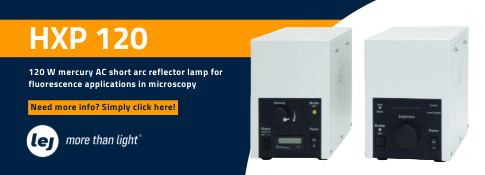Phase Contrast
Phase contrast, in microscopy, is an advanced technique designed to enhance the visibility of transparent samples that appear faint or nearly invisible in conventional brightfield microscopy. This method utilizes the phase shift of light passing through the specimen to create contrast and reveal details without the need for special staining techniques or dyes.
Details
Principle of Phase Contrast: When light passes through a transparent sample, it undergoes different phase shifts due to variations in the sample's density and refractive index. The phase contrast microscope employs specialized optical components, such as a phase ring or phase plate, to convert these phase shifts into changes in light intensity. As a result, the subtle differences in light passing through the sample are transformed into visible contrast, making fine details discernible.
Hardware for Phase Contrast:
-
Phase Contrast Objectives: Special phase contrast objectives with an integrated phase ring are necessary to convert the phase shift of light into visible contrast. These objectives are optimized for phase contrast microscopy and contain additional optical elements.
-
Phase Plate or Phase Ring: A phase plate or phase ring is a specific optical element placed between the light source and the condenser to create the phase shift.
-
Phase Contrast Condenser: The microscope's condenser must also be optimized for phase contrast microscopy to uniformly illuminate the sample and achieve optimal phase shift.
Applications in Life Science (Biology, Medicine, Biotechnology):
-
Cell Culture Observation: Phase contrast microscopy allows detailed observation of living cells in culture dishes or Petri dishes. This is particularly valuable for studying cell growth, cell movements, and other dynamic cellular processes.
-
Tissue Biology: Phase contrast microscopy is employed in examining tissue sections, enabling the study of tissue architecture and morphology without requiring elaborate staining methods.
-
Cell Morphology: Phase contrast microscopy is commonly used to analyze and characterize the shape, size, and structure of cells.
-
Microorganism Examination: Phase contrast microscopy facilitates the observation of microorganisms, such as bacteria, parasites, or algae, in their natural state without the need for staining or fixation.
Applications in Material Science:
-
Material Characterization: Phase contrast microscopy is employed in material science to study transparent materials, such as plastics, polymers, or optical glasses, and analyze their internal structure and morphology.
-
Thin Section Investigations: In material research, phase contrast microscopy is used to examine thin layers, films, or coatings to analyze their optical properties and structure.
-
Semiconductor Industry: In semiconductor research, phase contrast microscopy can be used for the characterization and analysis of semiconductor materials and structures.
Phase contrast microscopy remains a valuable technique in research, as it enables the examination of transparent samples and makes subtle structures and processes in living cells, tissues, and materials visible.

















































